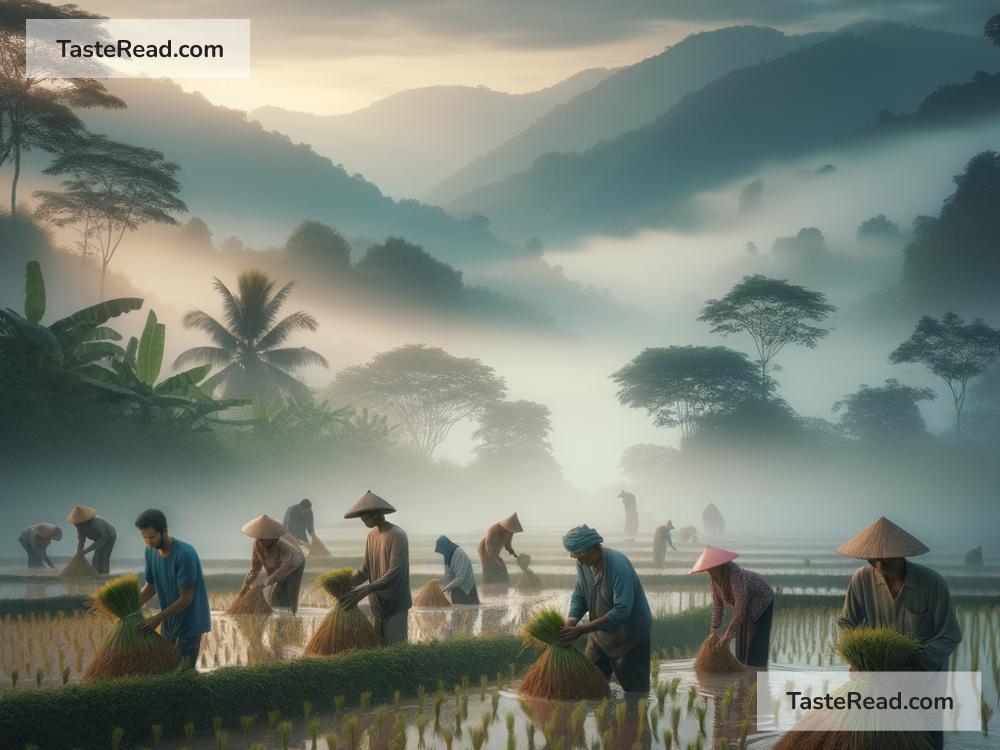How Rice Became Sacred in Asian Cultures
Rice is more than just food. In many Asian cultures, it is a symbol of life, community, and spirituality. For thousands of years, rice has played a major role in shaping the traditions, beliefs, and daily lives of millions of people across Asia. But how did rice become so sacred, and why does it hold such an important place in Asian societies? Let’s explore the story of rice and its deep connection with Asian cultures.
The History of Rice in Asia
Rice is one of the oldest cultivated crops in human history. Scientists say that its history goes back over 8,000 years. It is believed that rice farming started in regions near the Yangtze River in China and later spread to other parts of Asia, like India, Southeast Asia, Korea, and Japan.
With time, rice became a staple food for millions of people. It was easy to grow in the warm and wet climates of many Asian regions. Farmers learned to build rice paddies—fields with water—to grow this essential crop. Rice became reliable food for communities, ensuring survival during difficult seasons like floods or drought.
As rice grew in importance, it became more than just an agricultural product. It became part of the culture and identity of Asian societies.
Rice and Spiritual Beliefs
In many Asian cultures, rice is closely connected to spiritual practices and religion. It is often considered a sacred gift from nature or the gods. Because rice is essential for survival, it symbolizes life and prosperity.
China
In ancient China, rice was associated with the concept of balance and harmony. Rice farming was deeply tied to the cycles of nature—farmers depended on the seasonal changes and water resources to grow their crops. In Chinese mythology, some stories say that rice was a gift from heaven sent to humanity during challenging times. Even today, rice is often offered to ancestors or deities during religious rituals as a sign of respect and gratitude.
India
In India, rice also has strong spiritual meaning. It is a central part of many Hindu ceremonies, especially weddings and prayers. In Hindu tradition, uncooked rice is thought to be pure and is used in rituals as an offering to gods and goddesses. During weddings, rice is often thrown on newlyweds to bless them with prosperity and happiness. Rice is also used during festivals like Pongal, where people thank the sun god and celebrate the harvest.
Japan
In Japan, rice is seen as a sacred thread connecting people to the gods. The Shinto religion considers rice important because it represents nourishment and divine blessings. A popular Shinto ritual involves offering rice to deities to seek protection and good fortune. Additionally, sake, a rice-based drink, is used in religious ceremonies and celebrations, symbolizing purity and connection to the divine.
Southeast Asia
In countries like Indonesia, Thailand, and the Philippines, rice plays a vital role in cultural practices. Farmers in these regions often perform rituals before planting or harvesting rice to ensure a bountiful yield. Rice is thought to have a spirit, and traditions honor this spirit to maintain harmony with nature. For example, in Indonesia, ceremonies are performed to honor Dewi Sri, the goddess of rice and fertility.
Rice as Community and Tradition
Rice is also sacred because it binds communities together. Growing rice requires teamwork, as rice paddies demand a lot of care. In many Asian villages, rice farming is a family effort, where everyone works together to plant, water, and harvest the crop. These shared activities strengthen the bonds between people, creating unity and a sense of belonging.
Rice is also central to festivals and celebrations. Many Asian cultures organize harvest festivals to celebrate the end of the farming season and offer thanks for the rice crop. These festivals include feasting, dancing, and praying, and they bring communities together in joy and gratitude.
Rice is often served as the main dish during celebrations. For example, in Thailand, sticky rice is used to make desserts during special occasions. In the Philippines, rice cakes like bibingka and puto are popular festive treats. This shows how rice is not just food—it is a marker of cultural heritage and togetherness.
Modern-Day Significance
Even in the modern world, rice continues to play a sacred role in Asian cultures. While lifestyles and farming methods are changing, rice remains deeply respected. Many families still consider rice offerings during religious rituals or festivals as an essential practice. Rice dishes are also an important part of Asian cuisines, playing a role in both everyday meals and grand celebrations.
Rice paddies, with their green fields and quiet beauty, are also a symbol of peace and connection to nature. Many tourists in Asia visit rice terraces, appreciating not only their beauty but also their cultural significance.
Final Thoughts
Rice is more than just a crop; it is a way of life in Asia. Its importance goes beyond nutrition and economics—it is tied to spirituality, traditions, and community. Rice has sustained people for thousands of years, becoming a sacred thread that connects humans to nature and the divine.
In Asian cultures, rice is a symbol of life, gratitude, and harmony. As we enjoy a bowl of rice, it is worth remembering the rich history and deep meaning behind this humble grain.


